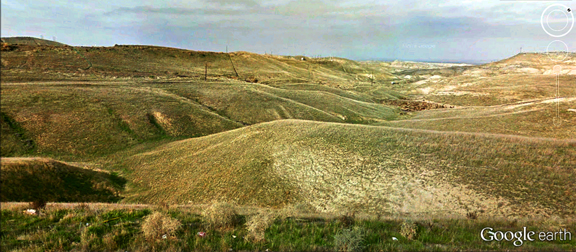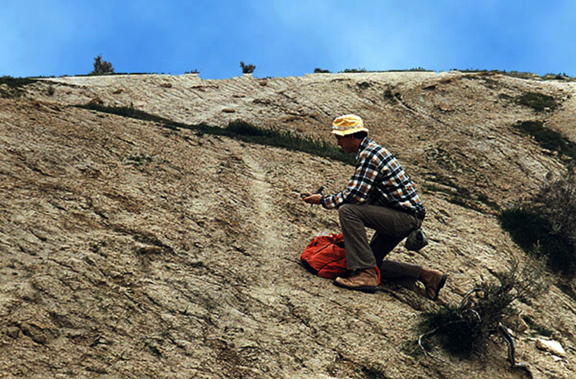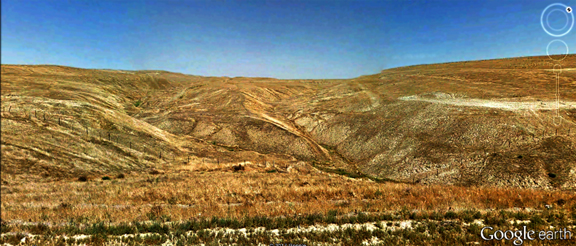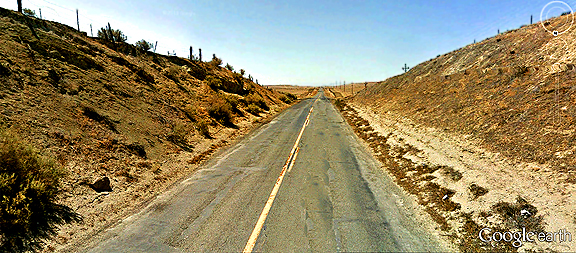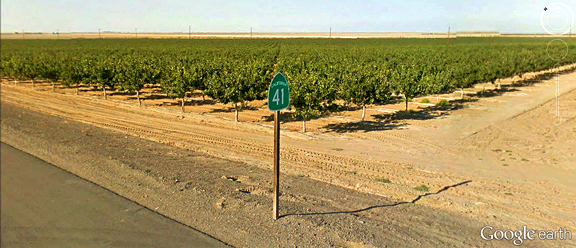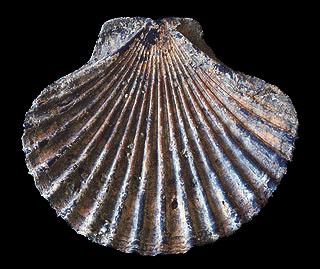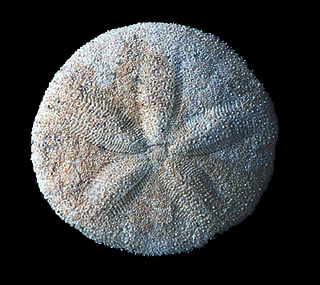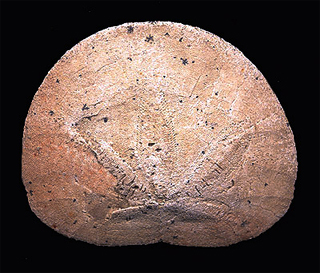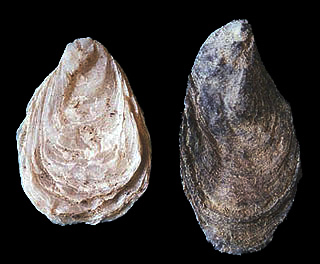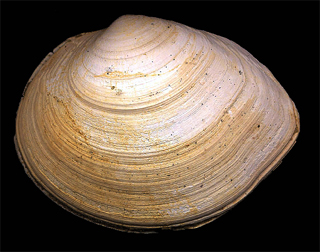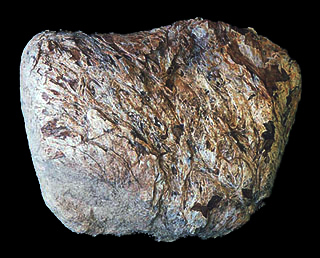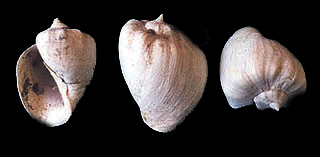Music Pages
Web sites I have created
pertaining to music
Paleontology-Related
Pages
Web sites I have created
pertaining to fossils
- Fossils
In Death Valley National Park:
A site dedicated to the paleontology, geology, and natural wonders
of Death Valley National Park; lots of on-site photographs of
scenic localities within the park; images of fossils specimens;
links to many virtual field trips of fossil-bearing interest.
- Fossil
Insects And Vertebrates On The Mojave Desert, California: Journey to two world-famous fossil sites in
the middle Miocene Barstow Formation: one locality yields upwards
of 50 species of fully three-dimensional, silicified freshwater
insects, arachnids, and crustaceans that can be dissolved free
and intact from calcareous concretions; a second Barstow Formation
district provides vertebrate paleontologists with one of the
greatest concentrations of Miocene mammal fossils yet recovered
from North America--it's the type locality for the Barstovian
State of the Miocene Epoch, 15.9 to 12.5 million years ago, with
which all geologically time-equivalent rocks in North American
are compared.
- A
Visit To Fossil Valley, Great Basin Desert, Nevada: Take a virtual field trip to a Nevada locality
that yields the most complete, diverse, fossil assemblage of
terrestrial Miocene plants and animals known from North America--and
perhaps the world, as well. Yields insects, leaves, seeds, conifer
needles and twigs, flowering structures, pollens, petrified wood,
diatoms, algal bodies, mammals, amphibians, reptiles, bird feathers,
fish, gastropods, pelecypods (bivalves), and ostracods.
- Fossils
At Red Rock Canyon State Park, California: Visit
wildly colorful Red Rock Canyon State Park on California's northern
Mojave Desert, approximately 130 miles north of Los Angeles--scene
of innumerable Hollywood film productions and commercials over
the years--where the Middle to Late Miocene (13 to 7 million
years old) Dove Spring Formation, along with a classic deposit
of petrified woods, yields one of the great terrestrial, land-deposited
Miocene vertebrate fossil faunas in all the western United States.
- Cambrian
And Ordovician Fossils At Extinction Canyon, Nevada:
Visit a site in Nevada's Great Basin Desert that yields locally
common whole and mostly complete early Cambrian trilobites, in
addition to other extinct organisms such as graptolites (early
hemichordate), salterella (small conical critter placed in the
phylum Agmata), Lidaconus (diminutive tusk-shaped shell of unestablished
zoological affinity), Girvanella (photosynthesizing cyanobacterial
algae), and Caryocaris (a bivalved crustacean).
- Late
Pennsylvanian Fossils In Kansas:
Travel to the midwestern plains to discover the classic late
Pennsylvanian fossil wealth of Kansas--abundant, supremely well-preserved
associations of such invertebrate animals as brachiopods, bryozoans,
corals, echinoderms, fusulinids, mollusks (gastropods, pelecypods,
cephalopods, scaphopods), and sponges; one of the great places
on the planet to find fossils some 307 to 299 million years old.
- Fossil
Plants Of The Ione Basin, California:
Head to Amador County in the western foothills of California's
Sierra Nevada to explore the fossil leaf-bearing Middle Eocene
Ione Formation of the Ione Basin. This is a completely undescribed
fossil flora from a geologically fascinating district that produces
not only paleobotanically invaluable suites of fossil leaves,
but also world-renowned commercial deposits of silica sand, high-grade
kaolinite clay and the extraordinarily rare Montan Wax-rich lignites
(a type of low grade coal).
- Ice
Age Fossils At Santa Barbara, California--Journey
to the famed So Cal coastal community of Santa Barbara (about
a 100 miles north of Los Angeles) to explore one of the best
marine Pleistocene invertebrate fossil-bearing areas on the west
coast of the United States; that's where the middle Pleistocene
Santa Barbara Formation yields nearly 400 species of pelecypod
bivalve mollusks, gastropods, chitons, scaphopods, pteropods,
brachiopods, bryozoans, corals, ostracods (minute bivalve crustaceans),
worm tubes, and foraminifers.
- Trilobites
In The Marble Mountains, Mojave Desert, California: Take a trip to the place that first inspired
my life-long fascination and interest in fossils--the classic
trilobite quarry in the Lower Cambrian Latham Shale, in the Marble
Mountains of California's Mojave Desert. It's a special place,
now included in the rather recently established Trilobite Wilderness,
where some 21 species of ancient plants and animals have been
found--including trilobites, an echinoderm, a coelenterate, mollusks,
blue-green algae and brachiopods.
- Fossil
Plants In The Neighborhood Of Reno, Nevada: Visit
two famous fossil plant localities in the Great Basin Desert
near Reno, Nevada--a place to find leaves, seeds, needles, foilage,
and cones in the middle Miocene Pyramid and Chloropagus Formations,
15.6 and 14.8 to 13.3 million years old, respectively.
- Dinosaur-Age
Fossil Leaves At Del Puerto Creek, California: Journey to the western edge of California's
Great Central Valley to explore a classic fossil leaf locality
in an upper Cretaceous section of the upper Cretaceous to Paleocene
Moreno Formation; the plants you find there lived during the
day of the dinosaur.
- Early
Cambrian Fossils Of Westgard Pass, California: Visit the Westgard Pass area, a world-renowned
geologic wonderland several miles east of Big Pine, California,
in the neighboring White-Inyo Mountains, to examine one of the
best places in the world to find archaeocyathids--an enigmatic
invertebrate animal that went extinct some 510 million years
ago, never surviving past the early Cambrian; also present there
in rocks over a half billion years old are locally common trilobites,
plus annelid and arthropod trails, and early echinoderms.
- Plant
Fossils At The La Porte Hydraulic Gold Mine, California:
Journey to a long-abandoned hydraulic gold mine in the neighborhood
of La Porte, northern Sierra Nevada, California, to explore the
upper Eocene La Porte Tuff, which yields some 43 species of Cenozoic
plants, mainly a bounty of beautifully preserved leaves 34.2
million years old.
- A
Visit To Ammonite Canyon, Nevada:
Explore one of the best-exposed, most complete fossiliferous
marine late Triassic through early Jurassic geologic sections
in the world--a place where the important end-time Triassic mass
extinction has been preserved in the paleontological record.
Lots of key species of ammonites, brachiopods, corals, gastropods
and pelecypods.
- Fossil
Plants At The Chalk Bluff Hydraulic Gold Mine, California: Take a field trip to the Chalk Bluff hydraulic
gold mine, western foothills of California's Sierra Nevada, for
leaves, seeds, flowering structures, and petrified wood from
some 70 species of middle Eocene plants.
- Field
Trip To The Alexander Hills Fossil District, Mojave Desert, California:
Visit a locality outside the southern sector of Death Valley
National Park to explore a paleontological wonderland that produces:
Precambrian stromatolites over a billion years old; early skeletonized
eukaryotic cells of testate amoebae over three-quarters of billion
years old; early Cambrian trilobites, archaeocyathids, annelid
trails, arthropod tracks, and echinoderm material; Pliocene-Pleistocene
vertebrate and invertebrate faunas; and late middle Miocene camel
tracks, petrified palm wood, petrified dicotlyedon wood, and
permineralized grasses.
- Fossils
In Millard County, Utah: Take
virtual field trips to two world-famous fossil localities in
Millard County, Utah--Wheeler Amphitheater in the trilobite-bearing
middle Cambrian Wheeler Shale; and Fossil Mountain in the brachiopod-ostracod-gastropod-echinoderm-trilobite
rich lower Ordovician Pogonip Group.
- Fossil
Plants, Insects And Frogs In The Vicinity Of Virginia City, Nevada:
Journey to a western Nevada badlands district near Virginia City
and the Comstock Lode to discover a bonanza of paleontology in
the late middle Miocene Coal Valley Formation.
- Paleozoic
Era Fossils At Mazourka Canyon, Inyo County, California: Visit a productive Paleozoic Era fossil-bearing
area near Independence, California--along the east side of California's
Owens Valley, with the great Sierra Nevada as a dramatic backdrop--a
paleontologically fascinating place that yields a great assortment
of invertebrate animals.
- Late
Triassic Ichthyosaur And Invertebrate Fossils In Nevada: Journey to two classic, world-famous fossil
localities in the Upper Triassic Luning Formation of Nevada--Berlin-Ichthyosaur
State Park and Coral Reef Canyon. At Berlin-Ichthyosaur, observe
in-situ the remains of several gigantic ichthyosaur skeletons
preserved in a fossil quarry; then head out into the hills, outside
the state park, to find plentiful pelecypods, gastropods, brachiopods
and ammonoids. At Coral Reef Canyon, find an amazing abundance
of corals, sponges, brachiopods, echinoids (sea urchins), pelecypods,
gastropods, belemnites and ammonoids.
- Fossils
From The Kettleman Hills, California:
Visit one of California's premiere Pliocene-age (approximately
4.5 to 2.0 million years old) fossil localities--the Kettleman
Hills, which lie along the western edge of California's Great
Central Valley northwest of Bakersfield. This is where innumerable
sand dollars, pectens, oysters, gastropods, "bulbous fish
growths" and pelecypods occur in the Etchegoin, San Joaquin
and Tulare Formations.
- Field
Trip To The Kettleman Hills Fossil District, California: Take a virtual field trip to a classic site
on the western side of California's Great Central Valley, roughly
80 miles northwest of Bakersfield, where several Pliocene-age
(roughly 4.5 to 2 million years old) geologic rock formations
yield a wealth of diverse, abundant fossil material--sand dollars,
scallop shells, oysters, gastropods and "bulbous fish growths"
(fossil bony tumors--found nowhere else, save the Kettleman Hills),
among many other paleontological remains.
- A
Visit To The Sharktooth Hill Bone Bed, Southern California: Travel to the dusty hills near Bakersfield,
California, along the eastern side of the Great Central Valley
in the western foothills of the Sierra Nevada, to explore the
world-famous Sharktooth Hill Bone Bed, a Middle Miocene marine
deposit some 16 to 15 million years old that yields over a hundred
species of sharks, rays, bony fishes, and sea mammals from a
geologic rock formation called the Round Mountain Silt Member
of the Temblor Formation; this is the most prolific marine, vertebrate
fossil-bearing Middle Miocene deposit in the world.
- High
Sierra Nevada Fossil Plants, Alpine County, California: Visit a remote fossil leaf and petrified wood
locality in the Sierra Nevada, at an altitude over 8,600 feet,
slightly above the local timberline, to find 7 million year-old
specimens of cypress, Douglas-fir, White fir, evergreen live
oak, and giant sequoia, among others.
- In
Search Of Fossils In The Tin Mountain Limestone, California: Journey to the Death Valley area of Inyo County,
California, to explore the highly fossiliferous Lower Mississippian
Tin Mountain Limestone; visit three localities that provide easy
access to a roughly 358 million year-old calcium carbate accumulation
that contains well preserved corals, brachiopods, bryozoans,
crinoids, and ostracods--among other major groups of invertebrate
animals.
- Middle
Triassic Ammonoids From Nevada:
Travel to a world-famous fossil locality in the Great Basin Desert
of Nevada, a specific place that yields some 41 species of ammonoids,
in addition to five species of pelecypods and four varieties
of belemnites from the Middle Triassic Prida Formation, which
is roughly 235 million years old; many paleontologists consider
this specific site the single best Middle Triassic, late Anisian
Stage ammonoid locality in the world. All told, the Prida Formation
yields 68 species of ammonoids spanning the entire Middle Triassic
age, or roughly 241 to 227 million years ago.
- Late
Miocene Fossil Leaves At Verdi, Washoe County, Nevada: Explore a fascinating fossil leaf locality
not far from Reno, Nevada; find 18 species of plants that prove
that 5.8 million years ago this part of the western Great Basin
Desert would have resembled, floristically, California's lush
green Gold Country, from Placerville south to Jackson.
- Fossils
Along The Loneliest Road In America: Investigate the
extraordinary fossil wealth along some 230 miles of The Loneliest
Road In America--US Highway 50 from the vicinity of Eureka, Nevada,
to Delta in Millard County, Utah. Includes on-site images and
photographs of representative fossils (with detailed explanatory
text captions) from every geologic rock deposit I have personally
explored in the neighborhood of that stretch of Great Basin asphalt.
The paleontologic material ranges in geologic age from the middle
Eocene (about 48 million years ago) to middle Cambrian (approximately
505 million years old).
- Fossil
Bones In The Coso Range, Inyo County, California: Visit the Coso Range Wilderness, west of Death
Valley National Park at the southern end of California's Owens
Valley, where vertebrate fossils some 4.8 to 3.0 million years
old can be observed in the Pliocene-age Coso Formation: It's
a paleontologically significant place that yields many species
of mammals, including the remains of Equus simplicidens, the
Hagerman Horse, named for its spectacular occurrences
at Hagerman Fossil Beds National Monument in Idaho; Equus
simplicidens is considered the earliest known member of the
genus Equus, which includes the modern horse and
all other equids.
- Field
Trip To A Vertebrate Fossil Locality In The Coso Range, California: Take a cyber-visit to the famous bone-bearing
Pliocene Coso Formation, Coso Mountains, Inyo County, California;
includes detailed text for the field trip, plus on-site images
and photographs of vertebrate fossils.
- Fossil
Plants At Aldrich Hill, Western Nevada:
Take a field trip to western Nevada, in the vicinity of Yerington,
to famous Aldrich Hill, where one can collect some 35 species
of ancient plants--leaves, seeds and twigs--from the Middle Miocene
Aldirch Station Formation, roughly 12 to 13 million years old.
Find the leaves of evergreen live oak, willow, and Catalina Ironwood
(which today is restricted in its natural habitat solely to the
Channel Islands off the coast of Southern California), among
others, plus the seeds of many kinds of conifers, including spruce;
expect to find the twigs of Giant Sequoias, too.
- Fossils
From Pleistocene Lake Manix, California:
Explore the badlands of the Manix Lake Beds on California's Mojave
Desert, an Upper Pleistocene deposit that produces abundant fossil
remains from the silts and sands left behind by a great fresh
water lake, roughly 350,000 to 19,000 years old--the Manix Beds
yield many species of fresh water mollusks (gastropods and pelecypods),
skeletal elements from fish (the Tui Mojave Chub and Three-Spine
Stickleback), plus roughly 50 species of mammals and birds, many
of which can also be found in the incredible, world-famous La
Brea Tar Pits of Los Angeles.
- Field
Trip To Pleistocene Lake Manix, California:
Go on a virtual field trip to the classic, fossiliferous badlands
carved in the Upper Pleistocene Manix Formation, Mojave Desert,
California. It's a special place that yields beaucoup fossil
remains, including fresh water mollusks, fish (the Mojave Tui
Chub), birds and mammals.
- Trilobites
In The Nopah Range, Inyo County, California:
Travel to a locality well outside the boundaries of Death Valley
National Park to collect trilobites in the Lower Cambrian Pyramid
Shale Member of the Carrara Formation.
- Ammonoids
At Union Wash, California: Explore
ammonoid-rich Union Wash near Lone Pine, California, in the shadows
of Mount Whitney, the highest point in the contiguous United
States. Union Wash is a ne plus ultra place to find Early Triassic
ammonoids in California. The extinct cephalopods occur in abundance
in the Lower Triassic Union Wash Formation, with the dramatic
back-drop of the glacier-gouged Sierra Nevada skyline in view
to the immediate west.
- A
Visit To The Fossil Beds At Union Wash, Inyo County California: A virtual field trip to the fabulous ammonoid
accumulations in the Lower Triassic Union Wash Formation, Inyo
County, California--situated in the shadows of Mount Whitney,
the highest point in the contiguous United States.
- Ordovician
Fossils At The Great Beatty Mudmound, Nevada: Visit a classic 475-million-year-old fossil
locality in the vicinity of Beatty, Nevada, only a few miles
east of Death Valley National Park; here, the fossils occur in
the Middle Ordovician Antelope Valley Limestone at a prominent
Mudmound/Biohern. Lots of fossils can be found there, including
silicified brachiopods, trilobites, nautiloids, echinoderms,
bryozoans, ostracodes and conodonts.
- Paleobotanical
Field Trip To The Sailor Flat Hydraulic Gold Mine, California: Journey on a day of paleobotanical discovery
with the FarWest Science Foundation to the western foothills
of the Sierra Nevada--to famous Sailor Flat, an abandoned hydraulic
gold mine of the mid to late 1800s, where members of the foundation
collect fossil leaves from the "chocolate" shales of
the Middle Eocene auriferous gravels; all significant specimens
go to the archival paleobotanical collections at the University
California Museum Of Paleontology in Berkeley.
- Early
Cambrian Fossils In Western Nevada:
Explore a 518-million-year-old fossil locality several miles
north of Death Valley National Park, in Esmeralda County, Nevada,
where the Lower Cambrian Harkless Formation yields the largest
single assemblage of Early Cambrian trilobites yet described
from a specific fossil locality in North America; the locality
also yields archeocyathids (an extinct sponge), plus salterella
(the "ice-cream cone fossil"--an extinct conical animal
placed into its own unique phylum, called Agmata), brachiopods
and invertebrate tracks and trails.
- Fossil
Leaves And Seeds In West-Central Nevada:
Take a field trip to the Middlegate Hills area in west-central
Nevada. It's a place where the Middle Miocene Middlegate Formation
provides paleobotany enthusiasts with some 64 species of fossil
plant remains, including the leaves of evergreen live oak, tanbark
oak, bigleaf maple, and paper birch--plus the twigs of giant
sequoias and the winged seeds from a spruce.
- Ordovician
Fossils In The Toquima Range, Nevada:
Explore the Toquima Range in central Nevada--a locality that
yields abundant graptolites in the Lower to Middle Ordovician
Vinini Formation, plus a diverse fauna of brachiopods, sponges,
bryozoans, echinoderms and ostracodes from the Middle Ordovician
Antelope Valley Limestone.
- Fossil
Plants In The Dead Camel Range, Nevada:
Visit a remote site in the vicinity of Fallon, Nevada, where
the Middle Miocene Desert Peak Formation provides paleobotany
enthusiasts with 22 species of nicely preserved leaves from a
variety of deciduous trees and evergreen live oaks, in addition
to samaras (winged seeds), needles and twigs from several types
of conifers.
- Early
Triassic Ammonoid Fossils In Nevada:
Visit the two remote localities in Nevada that yield abundant,
well-preserved ammonoids in the Lower Triassic Thaynes Formation,
some 240 million years old--one of the sites just happens to
be the single finest Early Triassic ammonoid locality in North
America.
- Fossil
Plants At Buffalo Canyon, Nevada:
Explore the wilds of west-central Nevada, a number of miles from
Fallon, where the Middle Miocene Buffalo Canyon Formation yields
to seekers of paleontology some 54 species of deciduous and coniferous
varieties of 15-million-year-old leaves, seeds and twigs from
such varieties as spruce, fir, pine, ash, maple, zelkova, willow
and evergreen live oak
- High
Inyo Mountains Fossils, California:
Take a ride to the crest of the High Inyo Mountains to find abundant
ammonoids and pelecypods--plus, some shark teeth and terrestrial
plants in the Upper Mississippian Chainman Shale, roughly 325
million years old.
- Field
Trip To The Copper Basin Fossil Flora, Nevada: Visit a remote region in Nevada, where the
Late Eocene Dead Horse Tuff provides seekers of paleobotany with
some 42 species of ancient plants, roughly 39 to 40 million years
old, including the leaves of alder, tanbark oak, Oregon grape
and sassafras.
- Fossil
Plants And Insects At Bull Run, Nevada:
Head into the deep backcountry of Nevada to collect fossils from
the famous Late Eocene Chicken Creek Formation, which yields,
in addition to abundant fossil fly larvae, a paleobotanically
wonderful association of winged seeds and fascicles (bundles
of needles) from many species of conifers, including fir, pine,
spruce, larch, hemlock and cypress. The plants are some 37 million
old and represent an essentially pure montane conifer forest,
one of the very few such fossil occurrences in the Tertiary Period
of the United States.
- A
Visit To The Early Cambrian Waucoba Spring Geologic Section,
California: Journey to the northwestern
sector of Death Valley National Park to explore the classic,
world-famous Waucoba Spring Early Cambrian geologic section,
first described by the pioneering paleontologist C.D. Walcott
in the late 1800s; surprisingly well preserved 540-510 million-year-old
remains of trilobites, invertebrate tracks and trails, Girvanella
algal oncolites and archeocyathids (an extinct variety of
sponge) can be observed in situ.
- Petrified
Wood From The Shinarump Conglomerate:
An image of a chunk of petrified wood I collected from the Upper
Triassic Shinarump Conglomerate, outside of Dinosaur National
Monument, Colorado.
- Fossil
Giant Sequoia Foliage From Nevada:
Images of the youngest fossil foliage from a giant sequoia ever
discovered in the geologic record--the specimen is Lower Pliocene
in geologic age, around 5 million years old.
- Some
Favorite Fossil Brachiopods Of Mine:
Images of several fossil brachiopods I have collected over the
years from Paleozoic, Mesozoic and Cenozoic-age rocks.
- In
Search Of Vanished Ages--Field Trips To Fossil Localities In
California, Nevada, And Utah--My
fossils-related field trips in full print book form (pdf). 98,703
words (equivalent to a medium-size hard cover work of non-fiction);
250 printed pages (equivalent to about 380 pages in hard cover
book form); 27 chapters; 30 individual field trips to places
of paleontological interest; 60 photographs--representative on-site
images and pictures of fossils from each locality visited.
US Geological Survey
Papers (Public Domain)
Online versions of USGS
publications I've created
|
